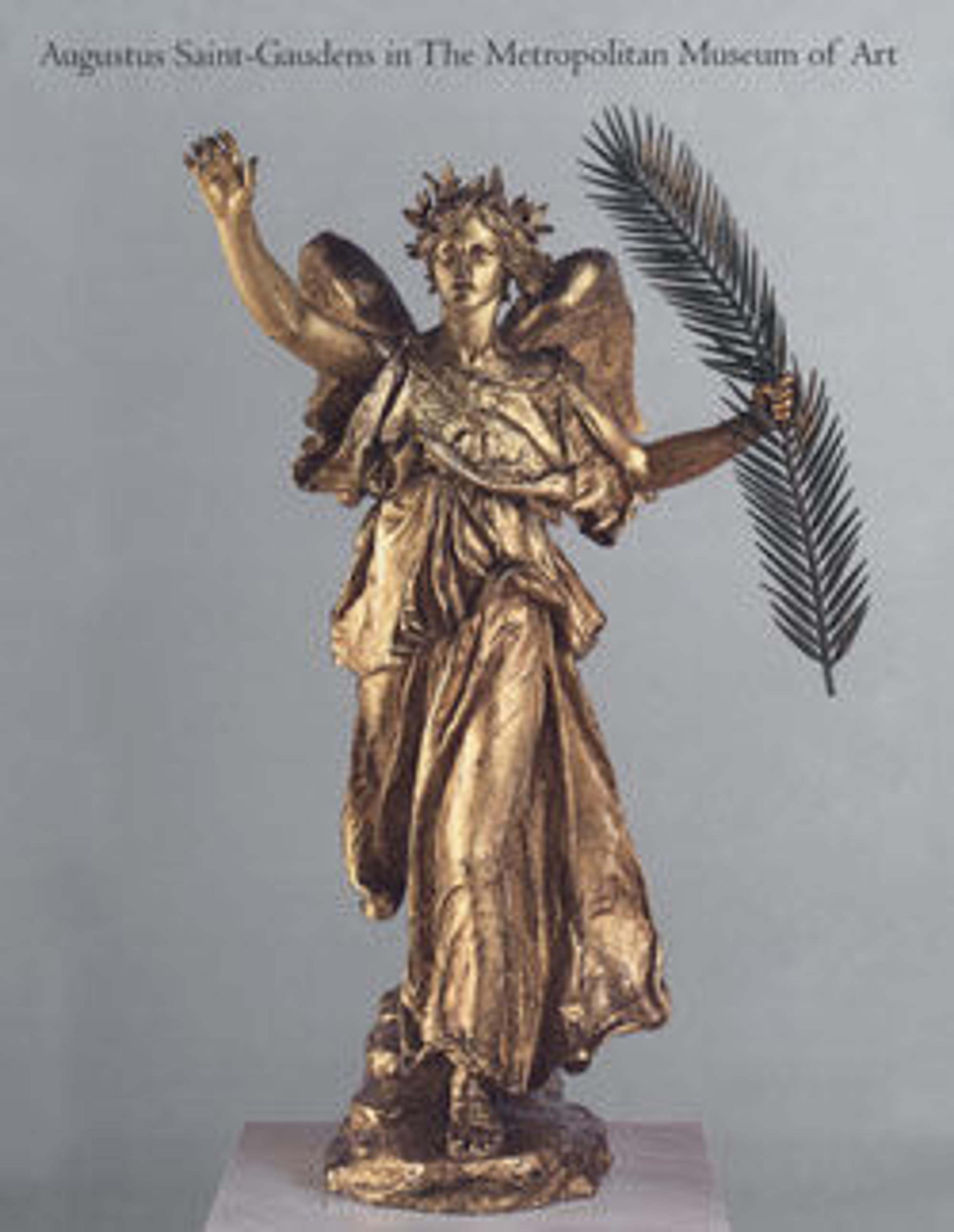United States Twenty-dollar Gold Piece
Having proclaimed the coinage produced by the United States Mint uninspired and commonplace, President Theodore Roosevelt invited Saint-Gaudens to redesign the ten- and twenty-dollar gold coins and the one-cent piece. Some ten months later, in November 1905, Saint-Gaudens submitted his preliminary sketches, becoming the first artist unaffiliated with the Mint to design a regular coinage issue. Roosevelt later declared the resulting coins (his "pet crime") were more beautiful than any since the days of the ancient Greeks.
The obverse of the twenty-dollar ("double eagle") coin depicts the dynamic figure of Liberty striding forward, derived from Saint-Gaudens’s "Victory" from the "Sherman Monument" (17.90.1). Behind her is the U. S. Capitol with rays of sun symbolizing enlightenment bursting upwards. On the reverse is a soaring eagle, inspired by the eagle on the 1857 and 1858 pennies. For these designs, Saint-Gaudens completed numerous sketches and guided his studio assistant Henry Hering, who carried out the finished models.
Saint-Gaudens died in August 1907, before the coins were minted. Roosevelt ordered that the gold coins be put into circulation before 1908. The ten-dollar coins were completed first, with the twenty-dollar coins minted by mid-December. The superlative early versions are notable for the wire rims and high degree of relief that prevented them from being stacked and the multiple number of strikes it took to achieve the final result. The Metropolitan’s examples (see 1979.486.6) are business strikes after designs modified by Charles E. Barber, chief engraver of the U.S. Mint to adapt them for commercial use (the flattened relief allowing for their creation with just one blow of the press). They contain the motto "In God We Trust," which was eliminated from the earliest versions, but ordered to appear on all coins struck after July 1, 1908.
The one-cent piece, which Saint-Gaudens prepared models for, was never minted.
The obverse of the twenty-dollar ("double eagle") coin depicts the dynamic figure of Liberty striding forward, derived from Saint-Gaudens’s "Victory" from the "Sherman Monument" (17.90.1). Behind her is the U. S. Capitol with rays of sun symbolizing enlightenment bursting upwards. On the reverse is a soaring eagle, inspired by the eagle on the 1857 and 1858 pennies. For these designs, Saint-Gaudens completed numerous sketches and guided his studio assistant Henry Hering, who carried out the finished models.
Saint-Gaudens died in August 1907, before the coins were minted. Roosevelt ordered that the gold coins be put into circulation before 1908. The ten-dollar coins were completed first, with the twenty-dollar coins minted by mid-December. The superlative early versions are notable for the wire rims and high degree of relief that prevented them from being stacked and the multiple number of strikes it took to achieve the final result. The Metropolitan’s examples (see 1979.486.6) are business strikes after designs modified by Charles E. Barber, chief engraver of the U.S. Mint to adapt them for commercial use (the flattened relief allowing for their creation with just one blow of the press). They contain the motto "In God We Trust," which was eliminated from the earliest versions, but ordered to appear on all coins struck after July 1, 1908.
The one-cent piece, which Saint-Gaudens prepared models for, was never minted.
Artwork Details
- Title:United States Twenty-dollar Gold Piece
- Maker:Augustus Saint-Gaudens (American, Dublin 1848–1907 Cornish, New Hampshire)
- Date:1905–7, gold coin 1911
- Medium:Gold
- Dimensions:Diam. 1 5/16 in. (3.3 cm)
- Credit Line:Gift of Heinz L. Stoppelmann, 1979
- Object Number:1979.486.8
- Curatorial Department: The American Wing
More Artwork
Research Resources
The Met provides unparalleled resources for research and welcomes an international community of students and scholars. The Met's Open Access API is where creators and researchers can connect to the The Met collection. Open Access data and public domain images are available for unrestricted commercial and noncommercial use without permission or fee.
To request images under copyright and other restrictions, please use this Image Request form.
Feedback
We continue to research and examine historical and cultural context for objects in The Met collection. If you have comments or questions about this object record, please contact us using the form below. The Museum looks forward to receiving your comments.
